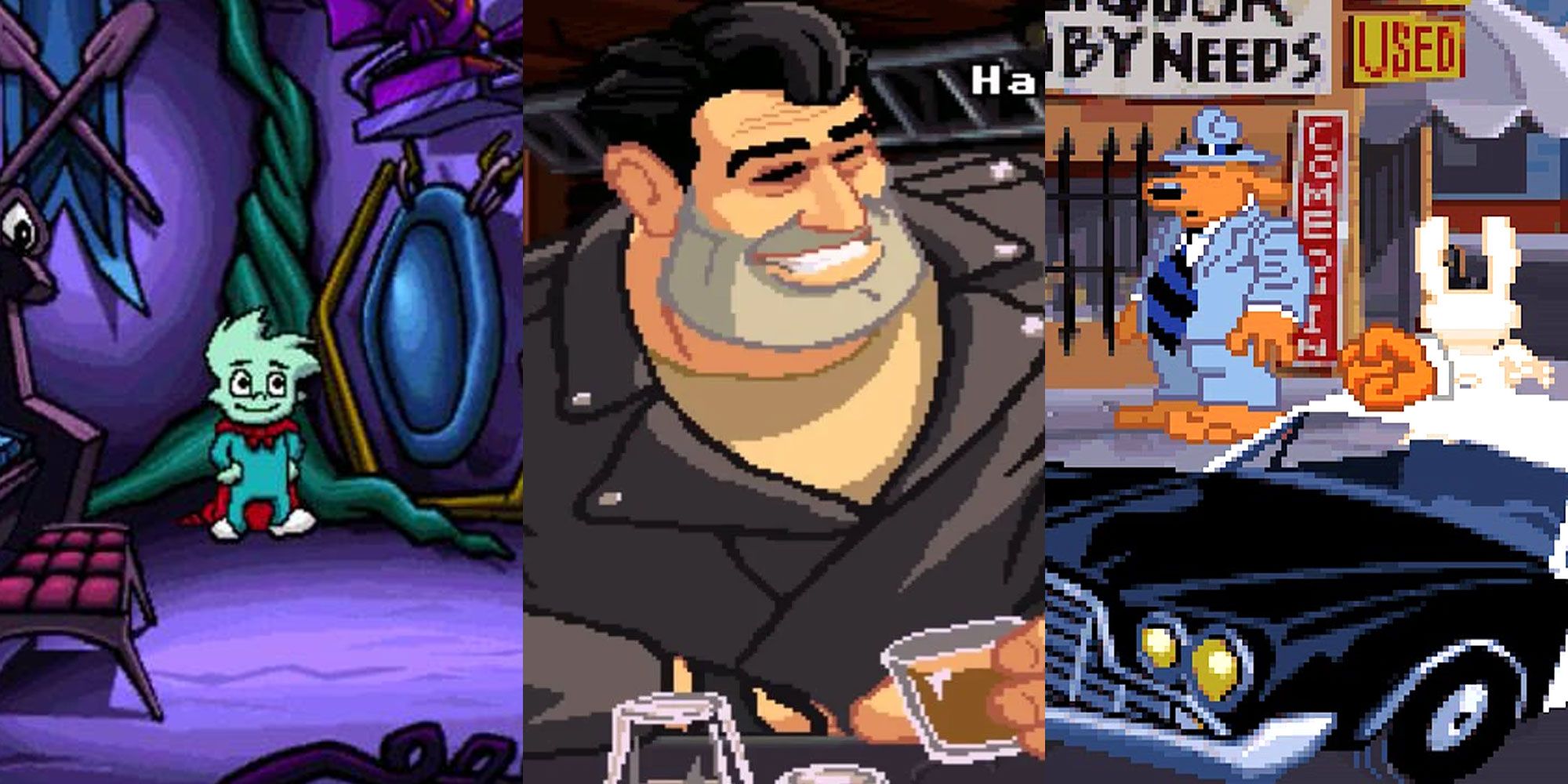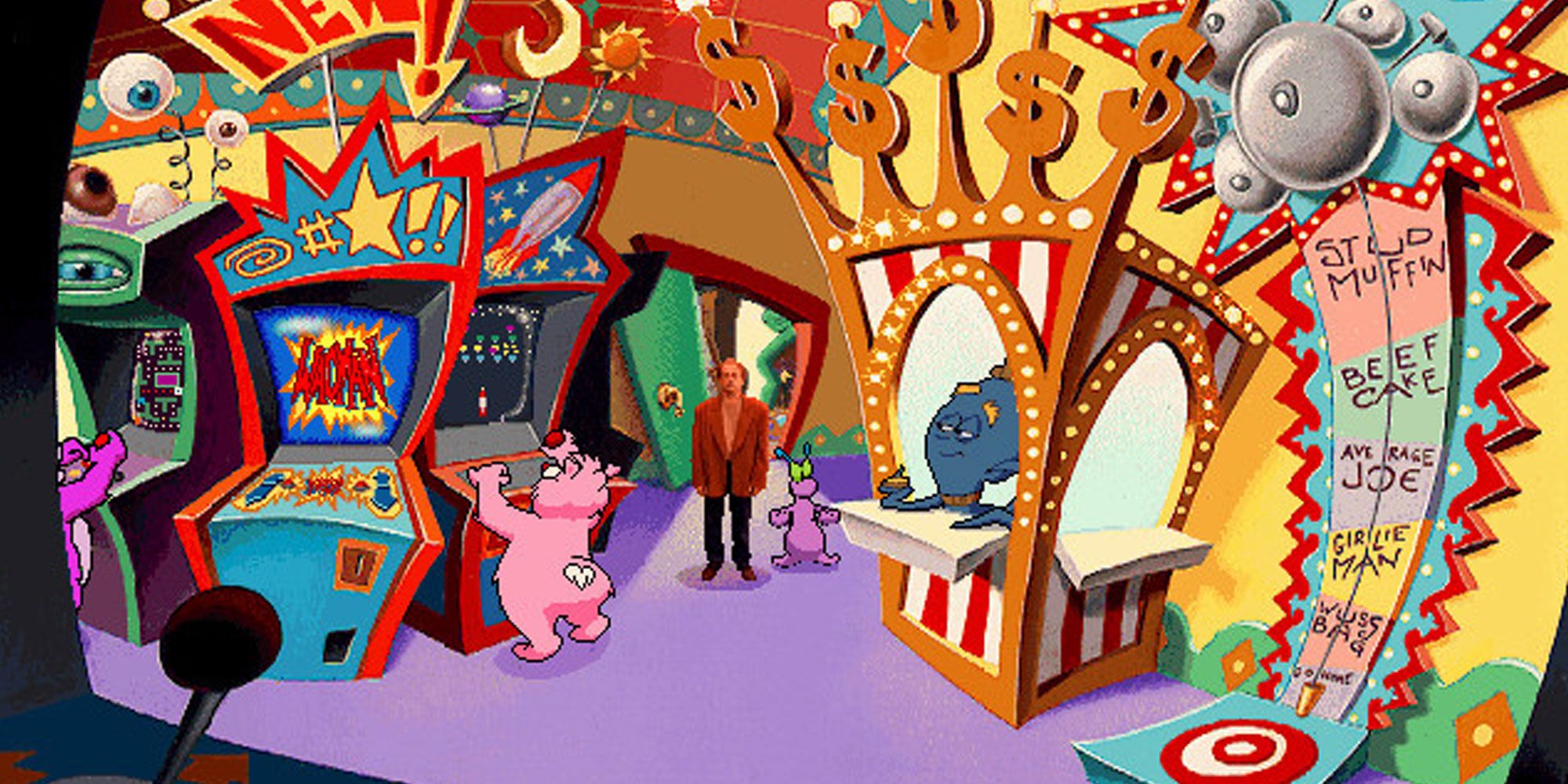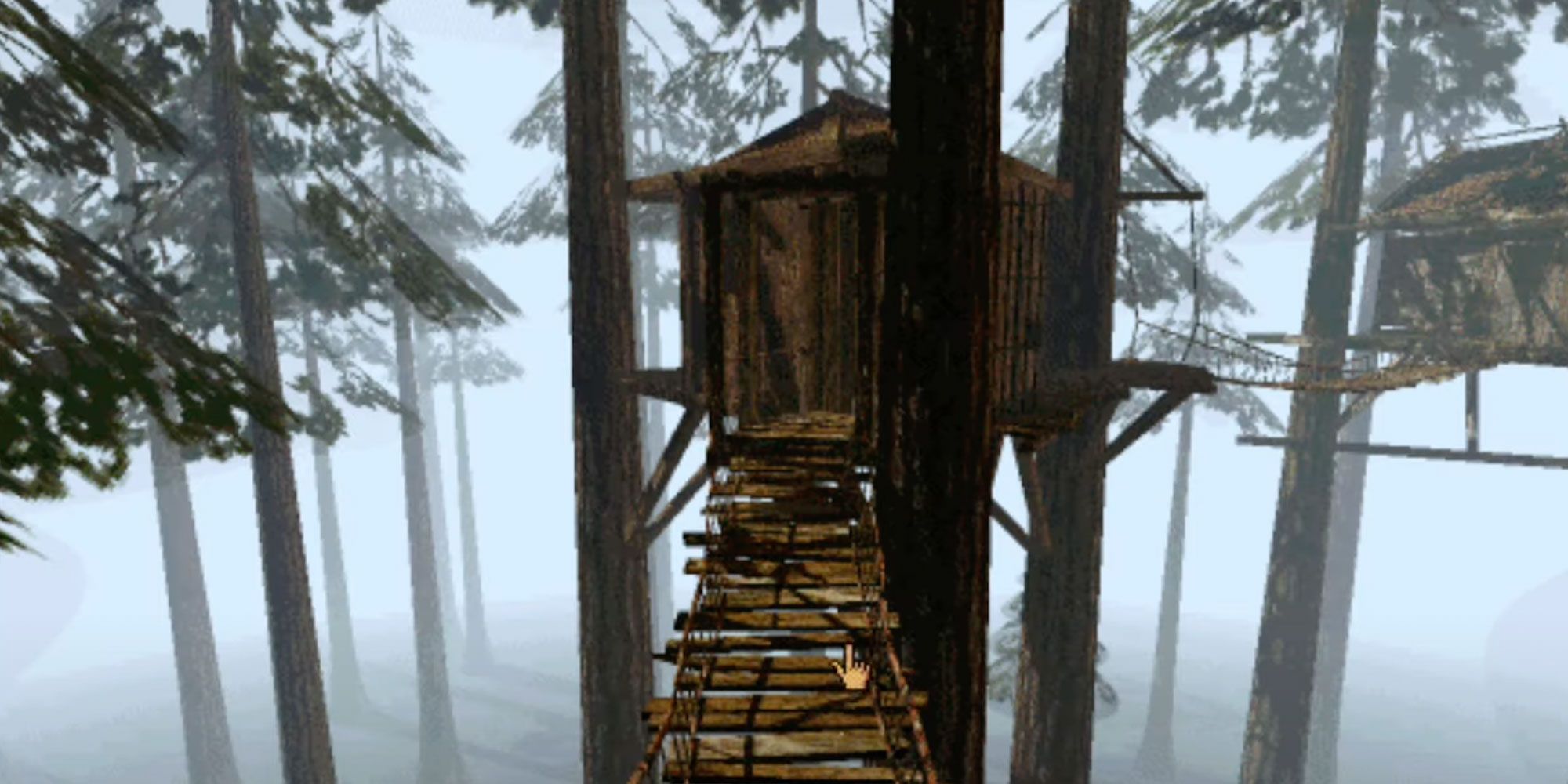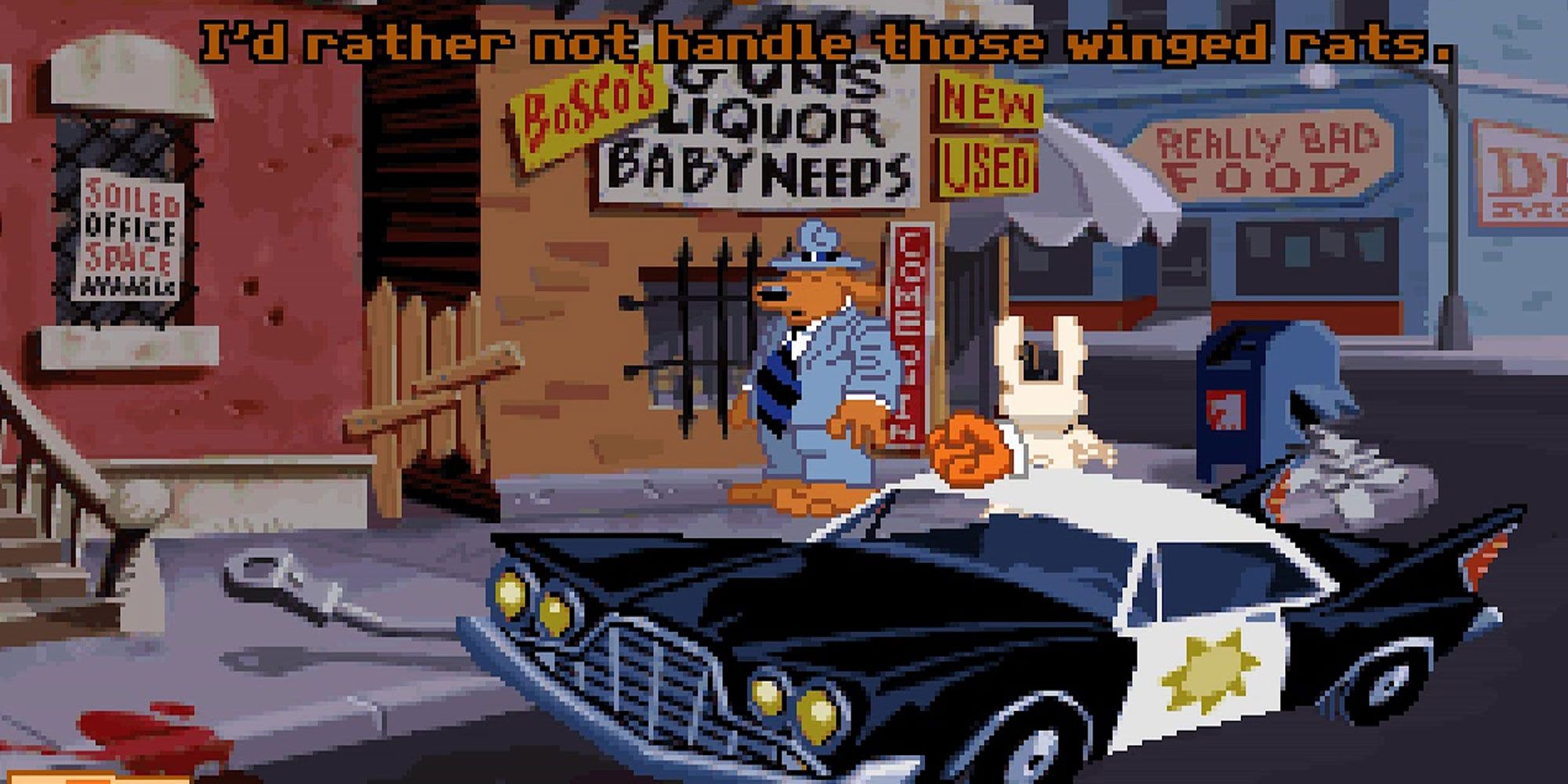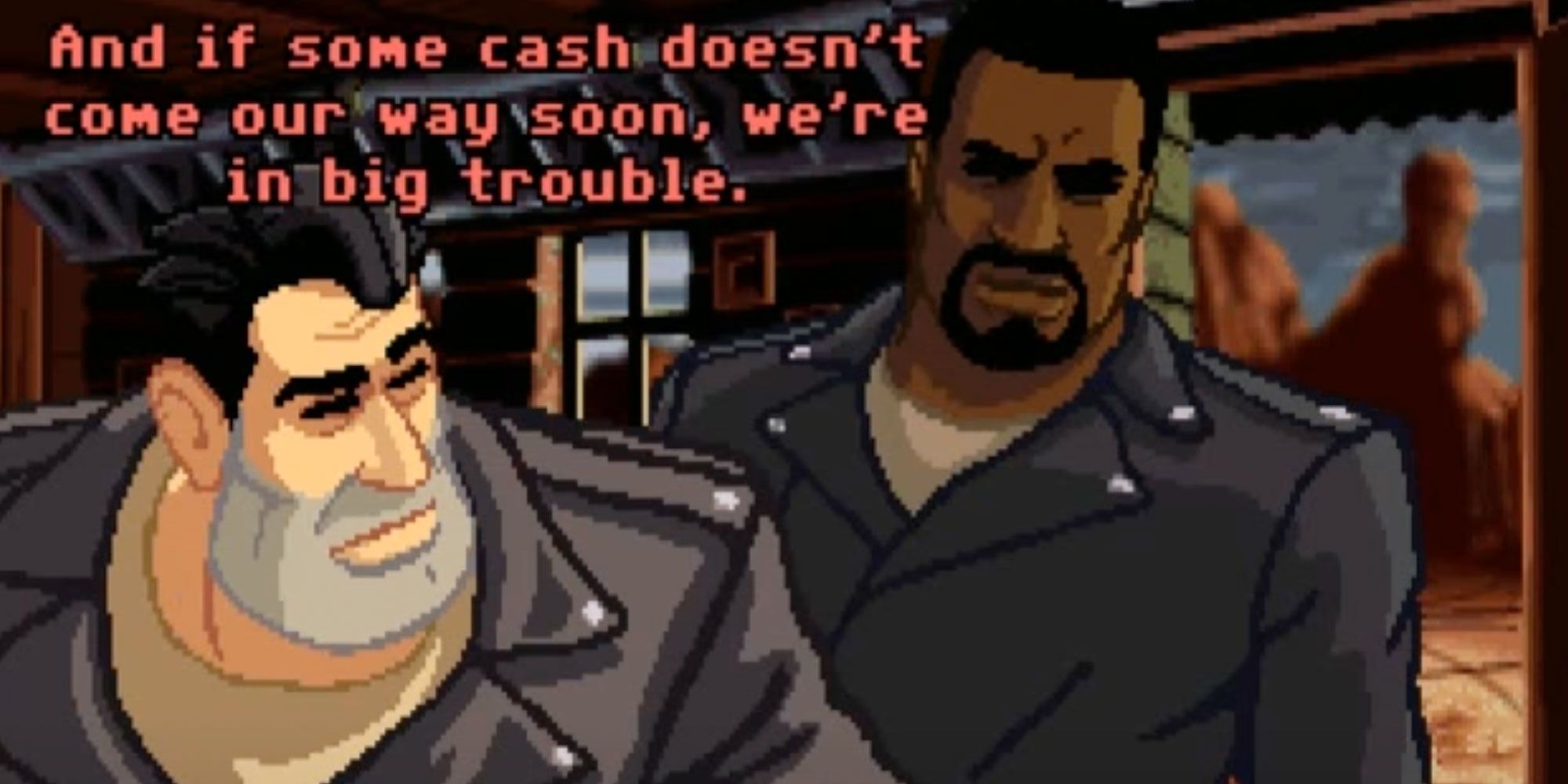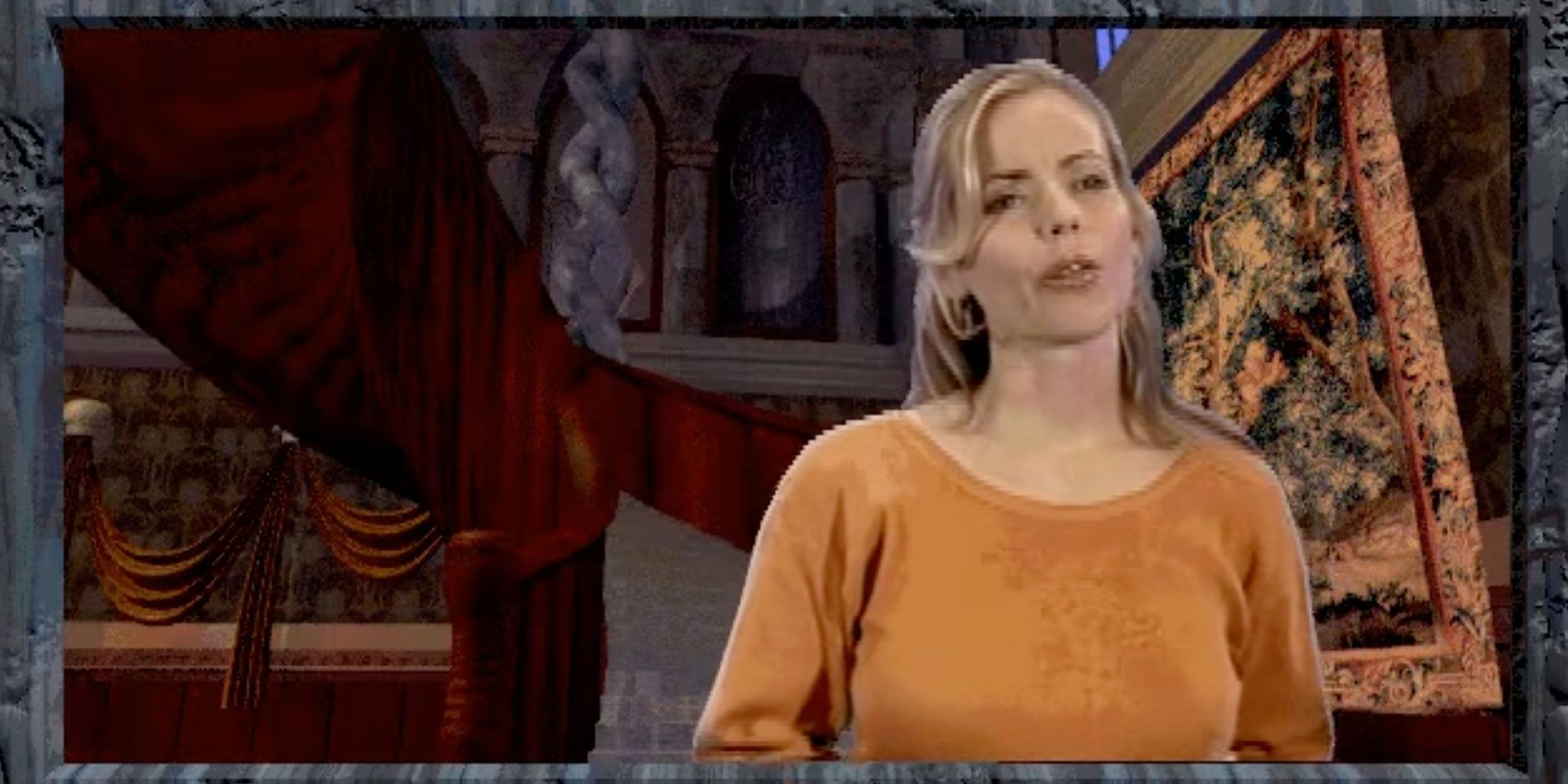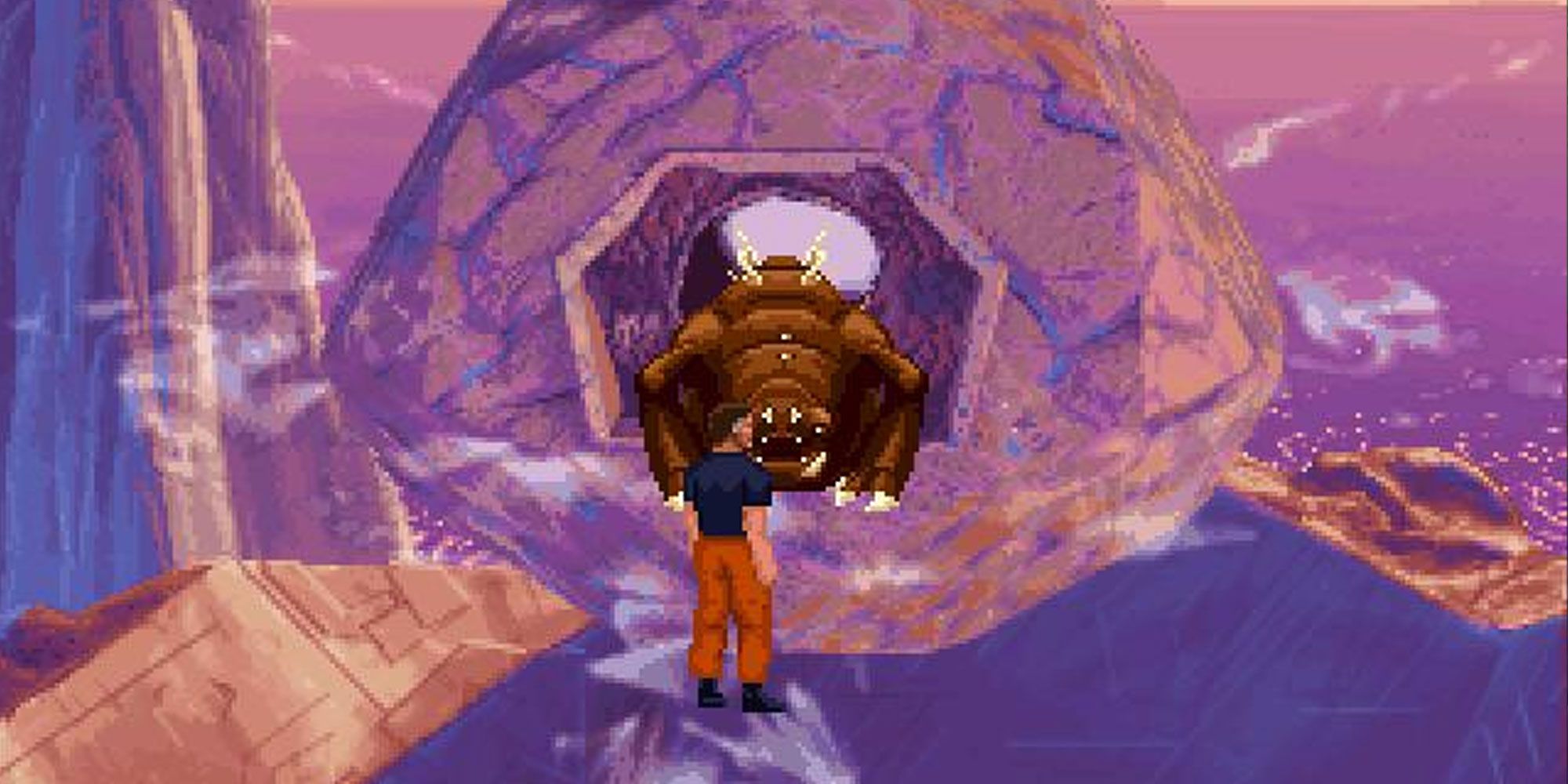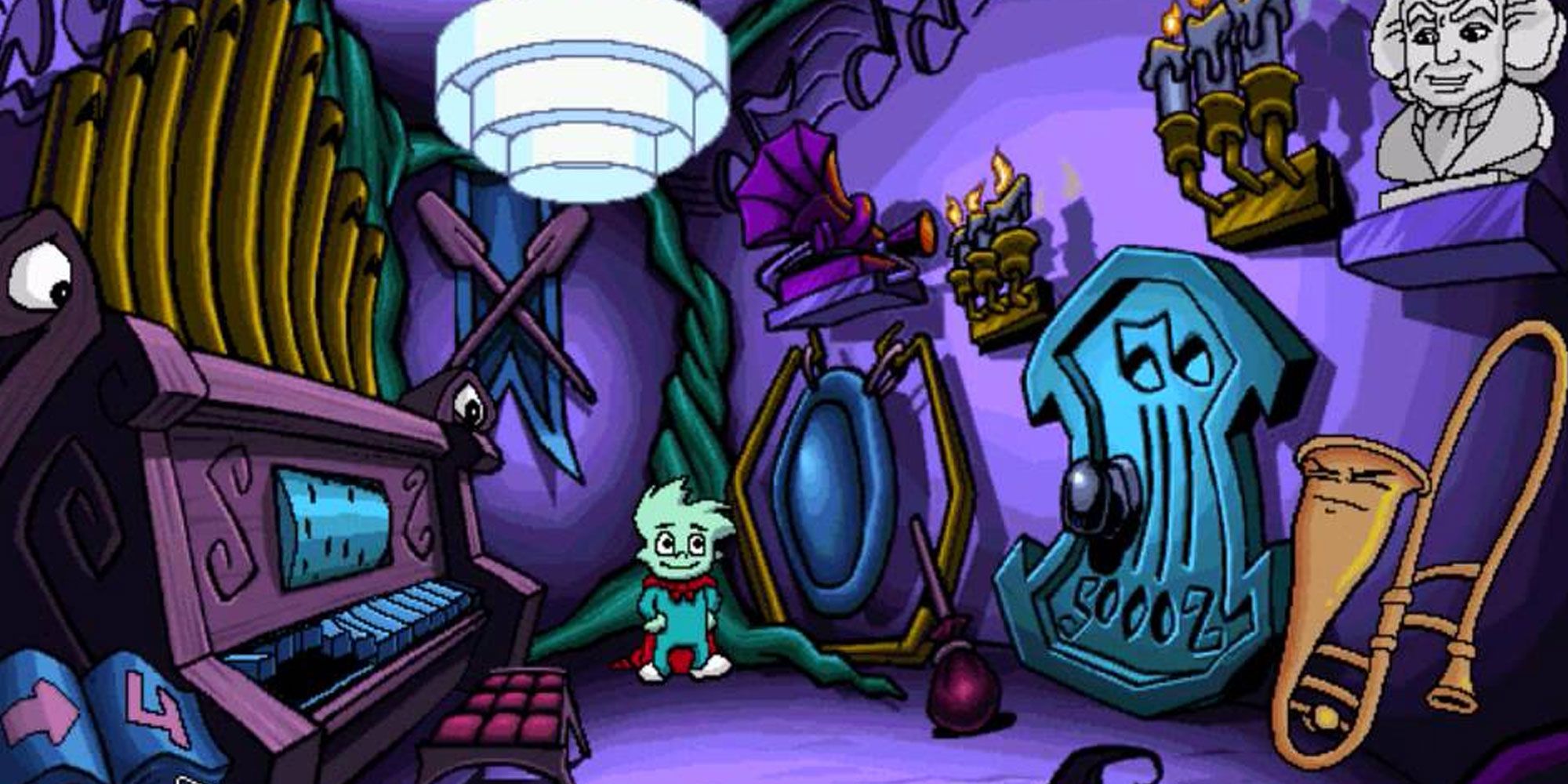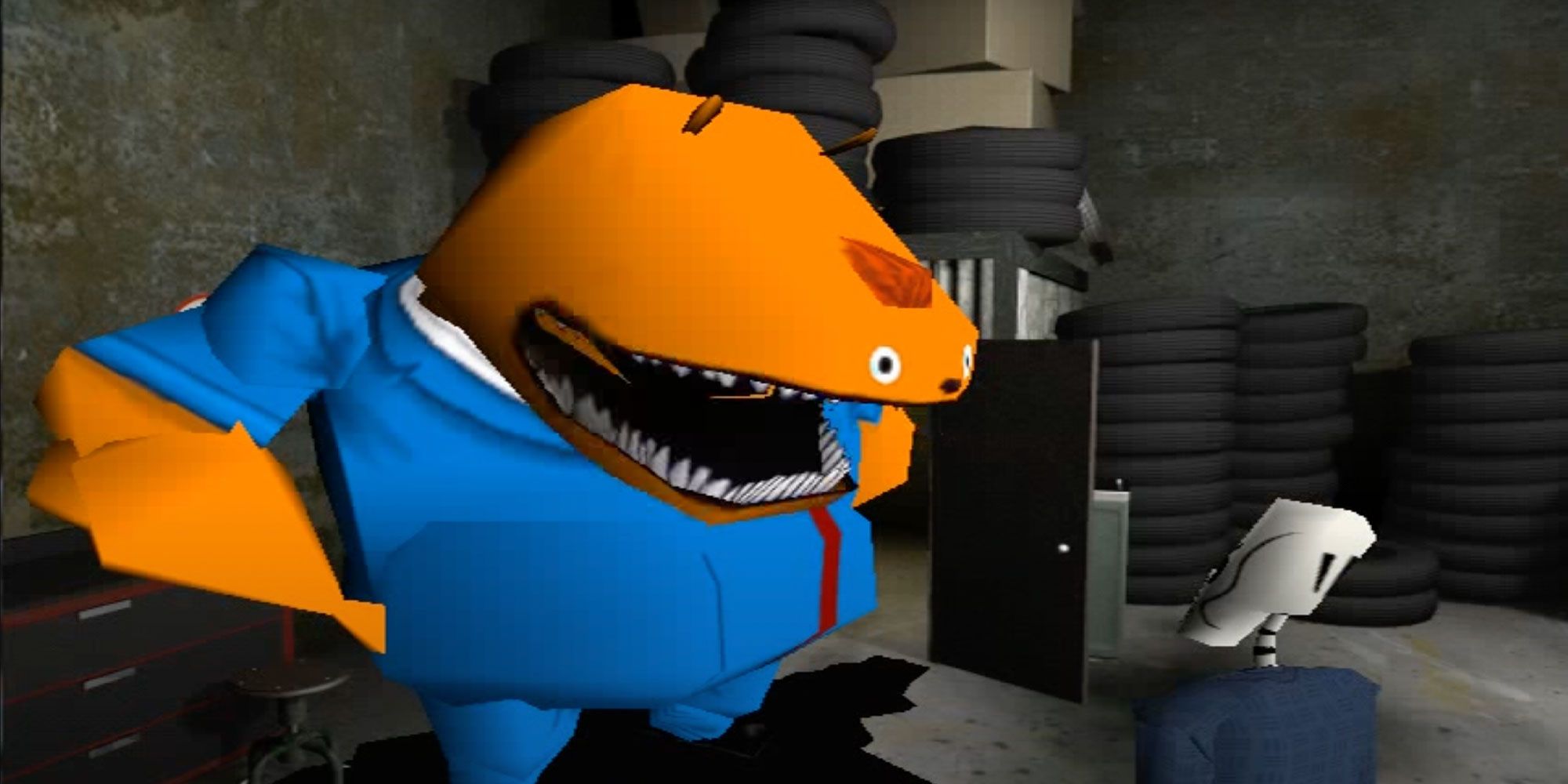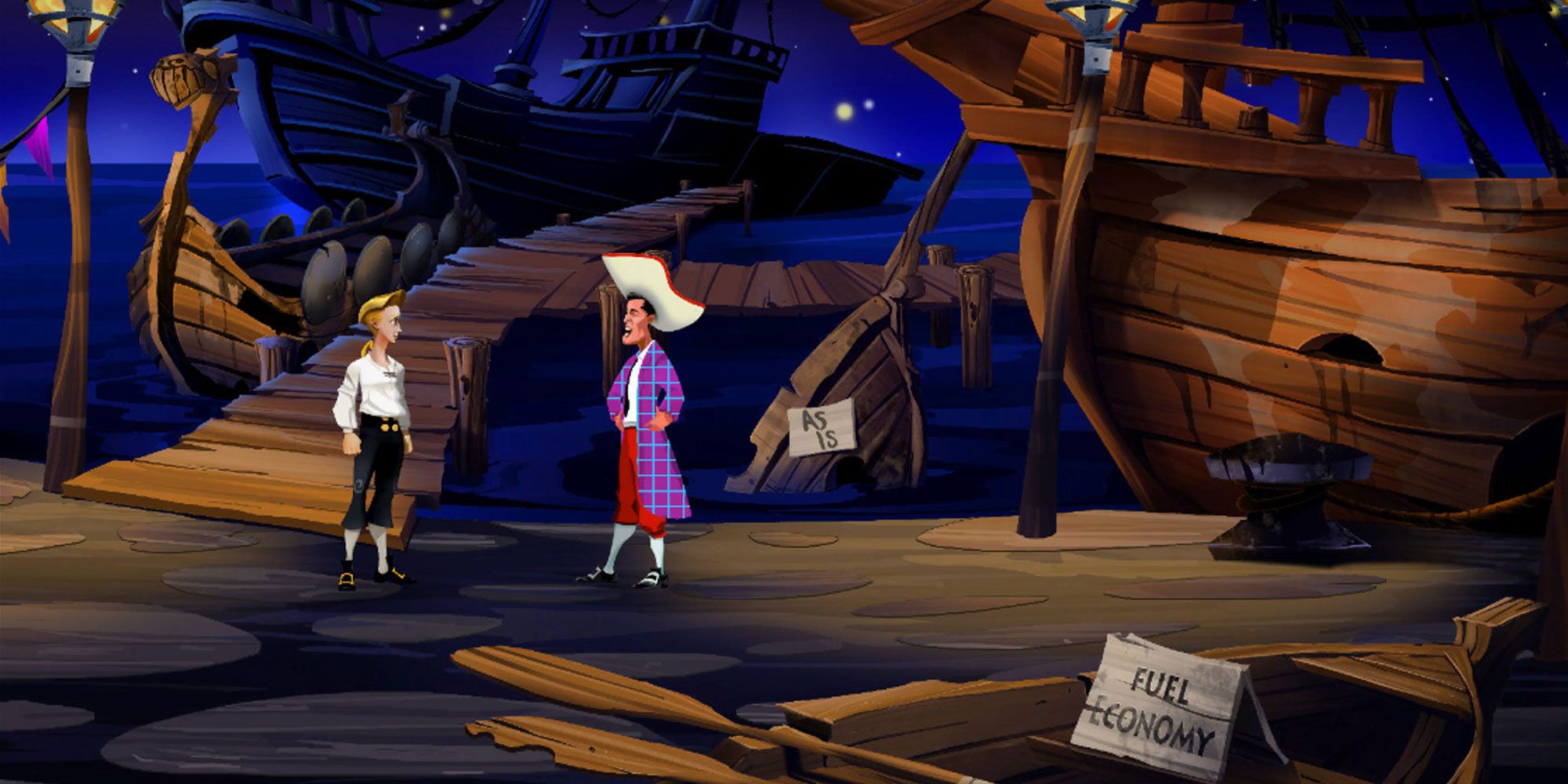With Monkey Island 5 on the horizon, graphic adventure games enthusiasts shot up with glee, seeing an old classic return. Gamers impressed by the trailer or looking to bide their time can rediscover what paved the path in the first place. Although pioneered in the '80s, the '90s are arguably the genre's best era, delivering innovations from LucasArts and Sierra Entertainment.
Although the genre has stilled, industry mainstays like Ron Gilbert still release homages like Thimbleweed Park. But what does remain are their influences of choice, creative problem solving, and mechanics still used in the industry today.
Toonstruck
Catering to the likes of Who Framed Roger Rabbit? fans, Toonstruck takes a page from their book going as far as to even include Christopher Lloyd. He plays a depressed animator forced to bend his creative vision to corporate demands, before finding himself mysteriously warped into his own cartoon.
The creative art direction drives the point-and-click adventure, giving players an entertaining show with their gameplay. Mixing FMV sequences and animation, the game stuns with its '90s visuals. It is that strength that has made the cult classic continue to surf the line between obscurity and being well renowned, even garnering enough interest for an attempt at a sequel in 2014.
Myst
In 1993, developers Cyan decided to make their mark on the graphic computer adventure genre. They wanted to make a game on their terms and took a puzzle concept and slowed down the stakes, creating a more calm and mysterious experience as opposed to the action-packed norm.
Myst was born from this concept, giving gamers a more relaxed environment to solve puzzles. Garnering respect from fields outside the gaming industry, it dazzled with its graphics and stylistic approach. Its influence has inspired similar takes, creating a quieter and more focused puzzle tone.
Sam & Max: Hit The Road
LucasArts was the undisputed king of the adventure game genre in the '90s, forming a collection of hit after acclaimed hit. And one of those reasons behind its many successes is the humor it built itself upon. Finding lighthearted moments in a dangerous journey ahead has been a staple in the works of George Lucas and it's only appropriate, that it's found in Sam & Max: Hit The Road.
These two goofballs explode with cartoonish grandeur, whether it be through references to the legacy that birthed it, or making comical adventures about the world surrounding them. The chemistry between the corny pals makes them an instantly likable pair and propels the player to follow their outlandish antics.
Full Throttle
Tim Schafer's love for heavy metal imagery gets kicked off in his first solo lead for LucasArts. Creating a product reminiscent of its time, Full Throttle oozes '90s sensibilities and comes with a hardcore attitude mirrored in its gameplay.
The game in addition to its traditional adventure elements also incorporates rock, paper, scissors motorcycle combat, and time sensitive sequences to add to the tension. Held up by a fantastic cast and soundtrack only secures its longevity, as an opening earworm from The Gone Jackals buzzes through the exciting first scene.
Phantasmagoria
Sierra Entertainment may have been known as the alternative to Lucas Arts Games, with entries like King's Quest, spear-headed by Roberta Williams, but other mature titles lay hidden in its library. In fact, Williams also brought Phantasmagoria into the scene and pioneered some of the ground-work for blending FMV sequences with layered graphics.
Not for the faint of heart, this entry embraces its horror and explores diabolical themes with gnarly special effects. Despite the controversies for its depiction of brutal violence, it would become Sierra's number one selling game, and a blueprint for effective horror in adventure games today.
The Dig
For those who seek a more cerebral game, The Dig takes a step back from the typical humor-based LucasArts romp and prefers an archeological approach. The scientific tone leads players into a cryptic experience where the puzzle solving becomes as alien as their surroundings.
It also has the unique privilege of being the only video game Steven Spielberg wrote for. That's worth the price of admission alone, but its penchant for creative problem solving and ethereal mise en scène propel its status to match the competition.
The Neverhood
Art direction often finds itself being one the main reasons most of these games resonate years after the fact. The Neverhood is no different, offering an experience like no other, embracing claymation as its medium.
Using over 3 tons of real clay, The Neverhood cemented its unique legacy in more ways than one. It also paved the way for the future by using electronic cameras to shoot a professional work of art. It's that indie spirit, which catapults them into the shelves of adventure gamers with an eye for craft.
Pajama Sam: No Need To Hide When It's Dark Outside
Humongous Entertainment made a name for itself with the Putt Putt and Freddie Fish games. They helped innovate education in the '90s by gamifying its lessons as well as creating a fun interactive play style. Designed by Ron Gilbert, Pajama Sam skyrocketed past its predecessors in reviews.
Sam's relatability clicked with its targeted audience, not only being the most human, but unsure and learning to find courage. The puzzles still challenge and inspire critical thinking, making it accessible to different generations.
Grim Fandango
The last original adventure IP from LucasArts also happens to be one of its most decorated. It would also be Tim Schafer's last project with the developer before creating his own gaming studio, Double Fine Productions. Taking inspiration from '40s capers and Día de Los Muertos, Grim Fandango blended themes of noir and the underworld, putting players into the shoes of a travel agent working off his debt.
Nominated by many for game of the year in 1998, while winning in adventure game categories, it was the last hurrah of the adventure genre of the '90s letting the medium end on a great note instead of a footnote. The storytelling is top-notch and laid a lot of groundwork for Schafer's future successes in the business. He proves in Grim Fandango what he can accomplish when let loose to play with genre, and is still considered to be one of his best works, with fans clamoring for a sequel or reboot.
The Secret Of Monkey Island
This game not only encompassed all that '90s adventure games would become but nailed it right off of the bat. The humor, the unmistakable art direction, the fun puzzles, and a plucky soundtrack to boot launched Lucas Arts Games to the next level with Monkey Island's first entry.
Ron Gilbert and Tim Schafer's writing powerhouse creates comical brilliance like insult sword fighting, hilarious misdirection, and gaming's silliest pirate, Guybrush Threepwood. The amount of love put into this project shines as brightly now as it did in 1990. The jokes still land as do the puzzles, and a willingness to let the player explore the wrong choices lead to replay value to see what laughs the player might have missed.

